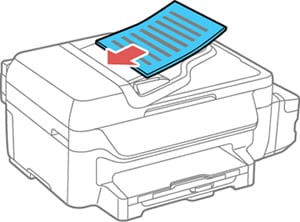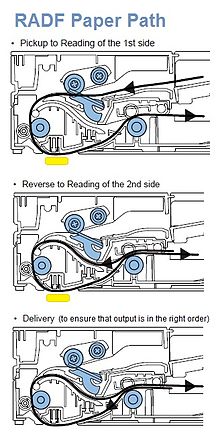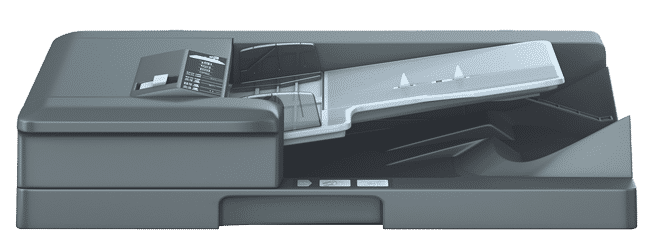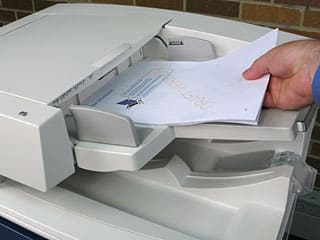What Is Adf Printer? Everything You Need to Know
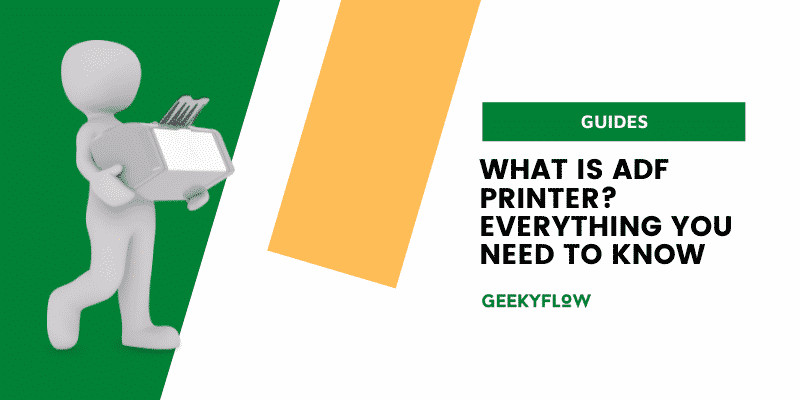
Technology is making advancements by the minute, and in recent times, one feature that printer customers must have come across is the term Automatic Document Feeder or ADF.
Though printer makers have been advertising this feature, it is still a relatively new technology, and people are unfamiliar with it.
To make you understand what does ADF mean on a printer and how does it function, we bring you this article on what is ADF printer and their functioning.
Contents
What is ADF printer?
The portion of a machine that accepts numerous sheets of paper and feeds them into the device one page at a time is known as an automated document feeder (ADF).
Users may now scan, copy, or print a multi-page document without loading every sheet on their own into the machine. Printers, scanners, copiers, and all-in-ones are all equipped with valuable features.
The automated document feeder automatically scans one or more papers using laser or LED technology. The automated document feeder expands your printer’s capabilities while reducing printing time.
How does it work
The automated document feeder on printers with an ADF may automatically process numerous pages (of varying sizes). There is no need to feed papers or change pages manually when utilizing a printer with an automated document feeder.
Each page is individually delivered to the printer, processed, and returned to the file system. A printer with an automatic document feeder scans documents using an LED or laser technology.
Scanning performance and outcomes differ substantially depending on the printer type and brand. Individual pages of paper are reviewed and processed in the sequence in which they were placed in the automated document feeder. Many homes and companies have ADF printers.
Types of Automatic Document Feeders
Automatic Document Feeders are of two types:
RADF
RADF is the acronym for Reversing Automatic Document Feeder. A single scanner is built into this type of CPU. Because this scanner is incorporated into the machine on one surface of the glass, two-faced authentic pages will pass through an automated turnaround.
This scans one face of the sheet, then the feeder flips it over and scans the other face. You will see that before passing through the scanner, every sheet is shuffled as it is drawn backward and forwards; this action permits both faces of the document to overlook the scanner.
While you won’t have to manually turn it, the page will have to flip around, which will take some time.
The paper route, as defined by the Reverse ADF, is the length that the sheet must cover within the machine when it scans or prints anything.
A RADF printer takes the sheet through a lengthier route when it processes a dual-sided document. Because of this, the sheet traverses through the feeder thrice.
DADF
The DADF, sometimes known as single-pass scanners or dual-scan document feeders, is an alternative to the RADF scanner. DADF scanners are becoming more common, and well-known brands including Canon, Konica Minolta, Kyocera, Lexmark, Samsung, and Sharp are all employing them.
Dual Scan Document Feeders are document feeders that have two scanners integrated in. Unlike RADF copiers, DADF machines may scan or copy both sides of a double-sided paper without needing to reverse the page.
The first scanner is integrated into the automatic paper feeding. It scans your documents as soon as they’re fed into the copier.
Another scanner makes a copy of each sheet on the second area of the glass, at the same time as the first.
Instead of reversing the page, each document page might be sent through without interruption, resulting in a shorter paper trail and faster processing time.
Tips for using ADF printer
While ADFs are not prone to errors, there are several things you can do to minimize frequent ADF problems and blunders, such as misalignment and jams.
Have a glance at the recommendations below for assisting you with your ADF.
- Ensure that the paper has are no staples, clips, or other objects on the sheets of paper.
- Make sure the feeder doesn’t have too much paper in it. Although each manufacturer’s printer may vary significantly, we recommend using no more than 15 – 20 pages at a time.
- Don’t use paper that has been ripped, frayed, or spiraled from a binder. Try to keep the edges straight.
- It’s best not to use images because they could get destroyed. Scanning or copying photographs should be done with a regular scanner or copier.
- Make sure your paper isn’t bending and fits securely against the paper width guidelines.
Benefits of ADF printer
An ADF printer can scan a document much faster than a regular printer on which you need to scan manually. You save a lot of time in addition to the human effort while you scan or copy multi-sheet reports.
The authentic report’s slow and lengthy manual rotation is not obligatory when the ADF printer supports duplex scanning.
The quality of the scans and printouts is much improved. Because the pages do not have to be turned manually, there are fewer text or image displacements than simplex ADF printers.
The duplex automatic document feeder comes in handy when you need to scan or print large mails, faxes, and multiple-page letters. The use of DADF multifunction devices in offices, firms, and households increases every day.
Who can benefit from an ADF?
ADF-equipped printers, scanners, copiers, and fax machines are beneficial to almost everyone. The cost difference between an ADF and a single-page manual feeder is so tiny that it’s virtually always worth upgrading.
The quick scanning, faxing, copying, and printing capabilities of an ADF can help anybody from a healthcare provider to a banker.
And as automation, OCR, and AI technologies progress, an ADF-enabled device could be the key to unlocking a new level of business insights by allowing you to digitize all of an organization’s data swiftly.
Conclusion
Thus, our manual on ADF printers concludes. We hope this has helped you in understanding what does ADF means on a printer and how it functions.
We have tried to explain the use and types of ADF printers in simple terms, along with their benefits over the regular, single-feed printers. Nowadays, ADF has become a common feature in printers, and it is worth the extra cost that a buyer has to pay.
Related Guides

